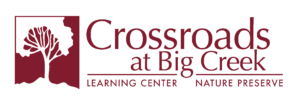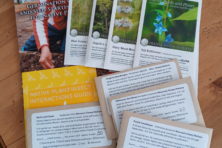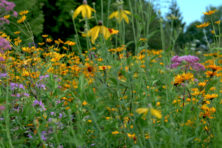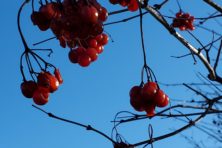Wild Ones: Welcome Bees with Native Plants and Trees
- Share
- Tweet
- Pin
- Share
Contrary to popular belief, on Feb. 2 every year, the groundhogs of Door County are not inexplicably aroused from hibernation to emerge from their burrow to predict the weather. I can confidently forecast that groundhogs will not appear in Door County for another month or so, and unless we have remarkably balmy temperatures, neither will the bees.
Spring will come eventually, though, even if skiable snow and lake ice don’t. And we’ll know it’s here when we see bees.
Honeybees emerge as soon as it’s warm enough to fly, and the first thing they do – well, the very first thing is relieve themselves because they’ve been holding it for months, but the second thing they do – is head off to find something that’s blooming to collect pollen to feed their young.
It’s a little more difficult to say what wild bees do. We have around 400 species in Wisconsin, and each species is different. Some emerge first thing in the spring, but others do not appear until a specific species of wildflower is blooming.
But wild native bees and European honeybees alike need to eat whenever they’re active, and that means there must be a food source from early spring until late fall.
Often, bees emerge before many flowers bloom – at least in gardens – so in early spring, trees and shrubs are often the best sources of pollen and nectar.
Several years ago, Wild Ones of the Door Peninsula brought award-winning author and native-bee specialist Heather Holm to Crossroads at Big Creek, where she conducted a workshop and gave a lecture that awakened us to the fascinating world of native pollinators and the native plant communities that support them. Naturally, I purchased and often refer to her book Bees: An Identification and Native Plant Forage Guide.
In it, she wrote, “For some landowners, a mass planting of a variety of trees and shrubs that are insect-pollinated may be a better solution than installing a meadow or prairie planting when time, interest or funding is not available for follow-up maintenance.”
I absolutely agree. Ripping up a yard to establish a wildflower meadow is a costly, long-term and arduous undertaking. Often it’s better to start small, and planting early-blooming shrubs may be the fastest and most successful way to begin helping pollinators.
Pussy willows – a far better predictor of spring than groundhogs – have silky, gray catkins that appear much earlier than most flowers and provide scads of pollen for insects. They have the added benefits of being a host plant to butterflies, providing good nesting cover for birds and thriving in wet areas.
Red osier dogwood is another plant that thrives in wet areas, but it grows and spreads in dry areas as well. Its flowers provide nectar and pollen for bees, and the plant later produces small, white berries that attract birds. And for winter color, you can’t beat the bright-red twigs of this plant.
Native dogwoods, viburnums such as nannyberry and highbush cranberry, wild plums, and ninebarks all bloom in the spring. They’re usually available at local nurseries in one-gallon pots and can be ordered from native-plant catalogs.
Of the native trees with insect-pollinating blossoms, the red maple is the wings-down favorite of most wild bees. This attractive maple tree with the small, pretty, red flowers thrives in wet areas, but it also grows on hills and along woodland edges.
Spring will come – whether or not the groundhog sees its shadow – and with it, hopefully, more and more people will be adding early-spring- blooming shrubs and trees to their home landscapes.
Coggin Heeringa is the president of Wild Ones of the Door Peninsula and the program director/naturalist at Crossroads at Big Creek in Sturgeon Bay.





